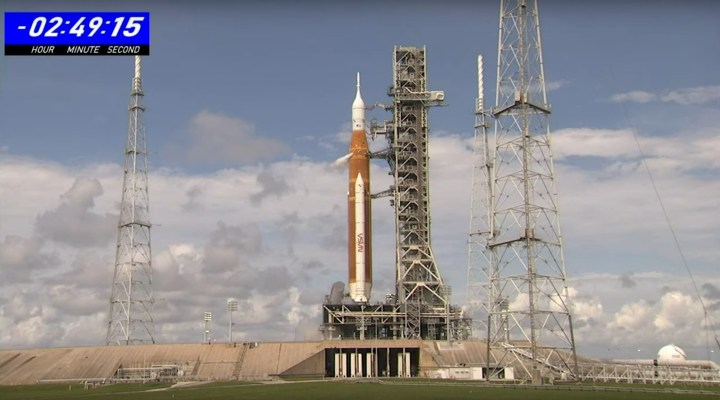NASA has called off today’s planned launch of its new Space Launch System rocket. The launch was to be the start of the Artemis I mission, in which the rocket would carry the uncrewed Orion spacecraft on its mission around the moon. But a liquid hydrogen fuel leak meant the launch had to be scrubbed.
The leak was first observed this morning, Saturday, September 3, when the rocket’s tanks were being filled with liquid oxygen and liquid hydrogen which act as fuel for the launch. There was a leak in the liquid hydrogen line which connected to the rocket’s core stage, requiring the tanking to be halted.

“The launch director waived off today’s Artemis I launch attempt at approximately 11:17 a.m. EDT,” NASA wrote in an update. “Teams encountered a liquid hydrogen leak while loading the propellant into the core stage of the Space Launch System rocket. Multiple troubleshooting efforts to address the area of the leak by reseating a seal in the quick disconnect where liquid hydrogen is fed into the rocket did not fix the issue. Engineers are continuing to gather additional data.”
Launch director Charlie Blackwell-Thompson declared the launch a “no-go” at just after 11 a.m. ET (8 a.m. PT) this morning. The teams had tried several options to stop the leak, including warming up the quick disconnect in the hope it would reseal, to using helium to add pressure to the line to try to reseal it. But none of the attempts fully stopped the leak, so the launch was called off when the liquid oxygen tank was 100% full and the liquid hydrogen tank was 11% full.
Now, the tanks will have to be drained of propellants before another launch attempt can be made. If the leak issue can be fixed in time, there is another launch opportunity for the rocket on Monday, September 5.
Editors' Recommendations
- SpaceX all set for a record-breaking rocket launch on Friday
- SpaceX’s stunning Starship photos show launch rehearsal
- NASA switches SpaceX’s Crew-8 launch date again
- How to watch NASA and SpaceX launch a private lunar lander mission this week
- How to watch NASA launch its newest ocean and atmosphere observation satellite tonight




